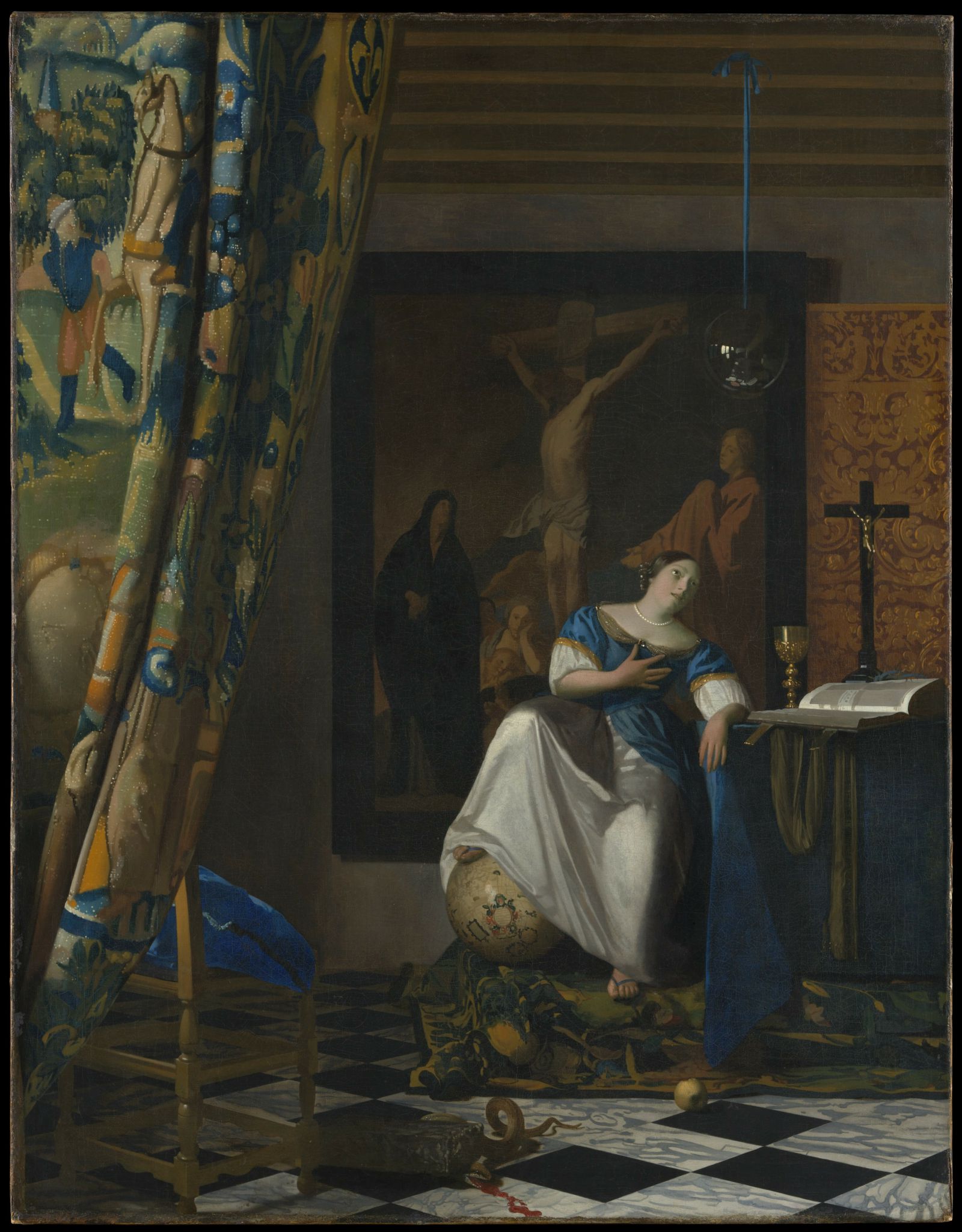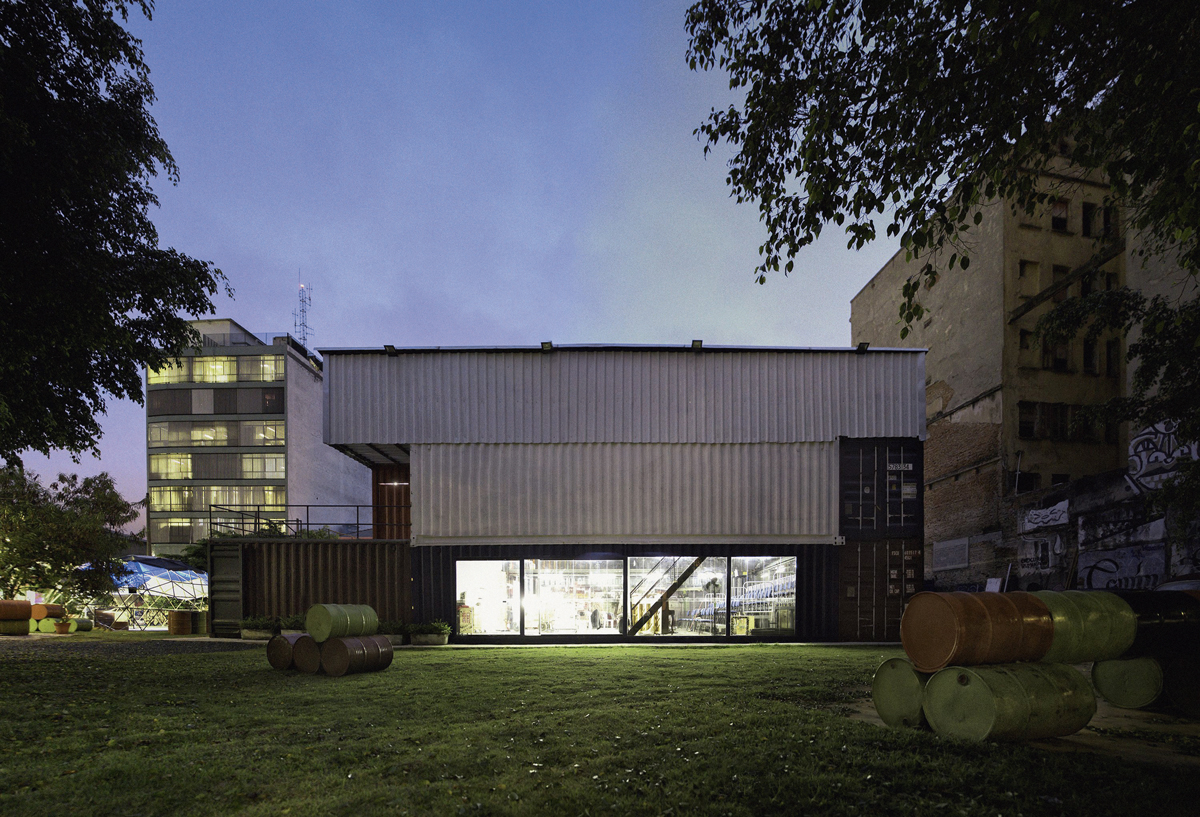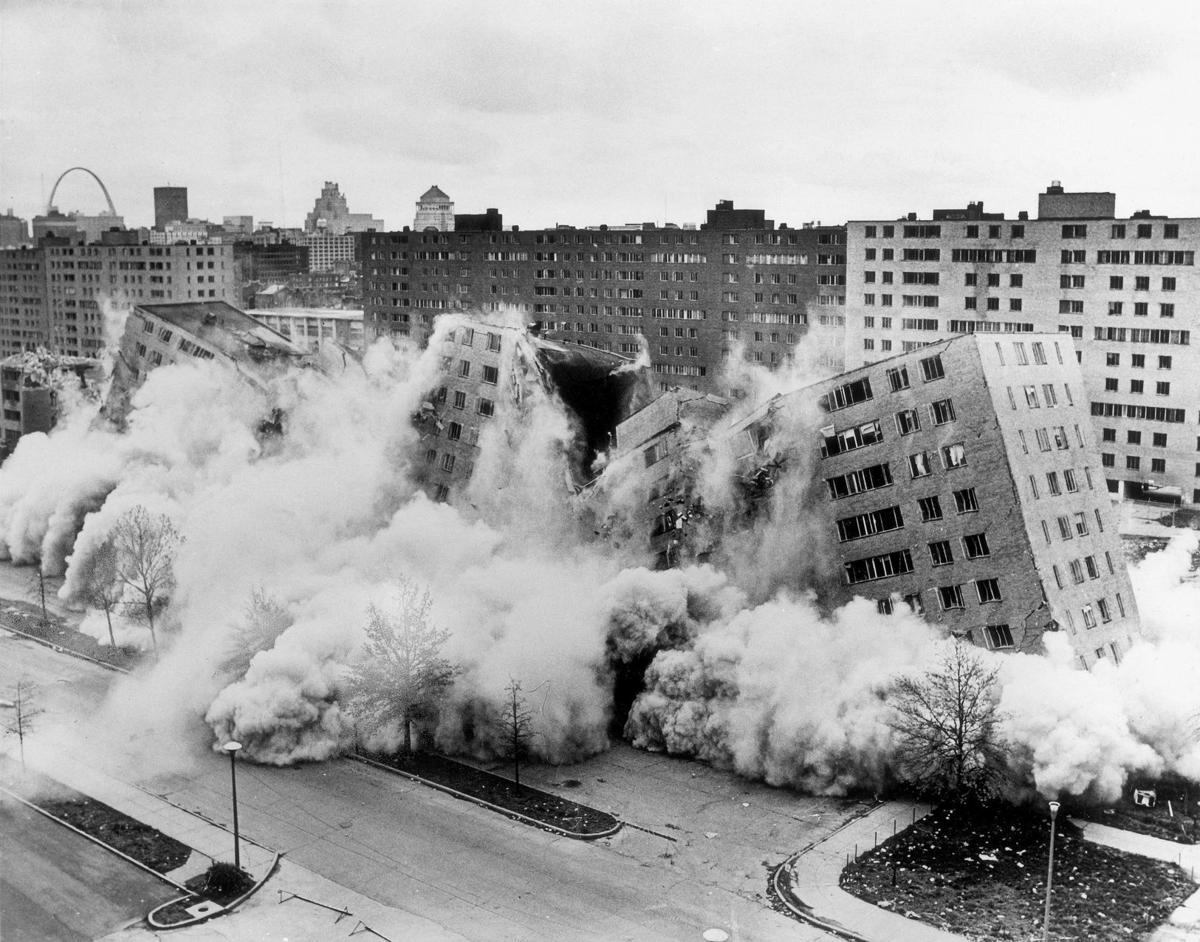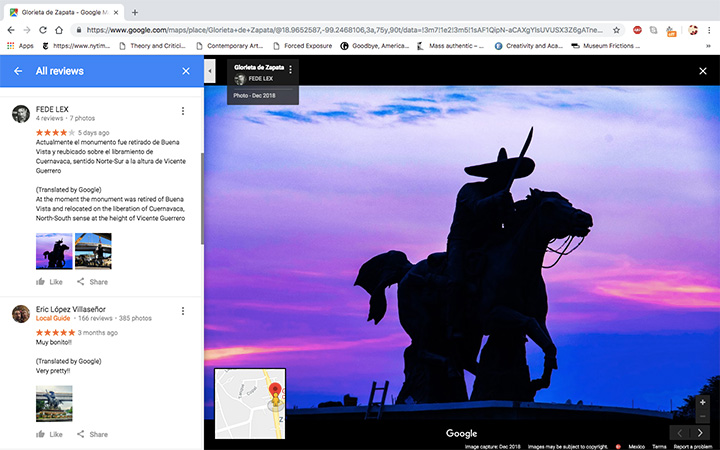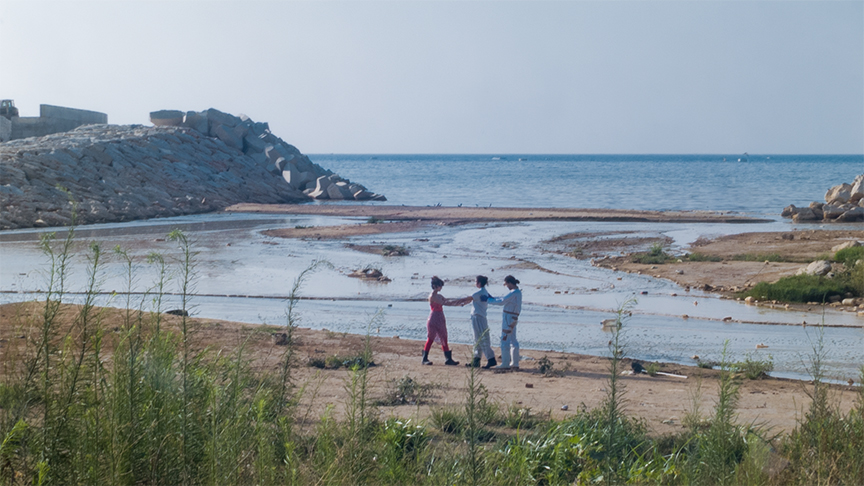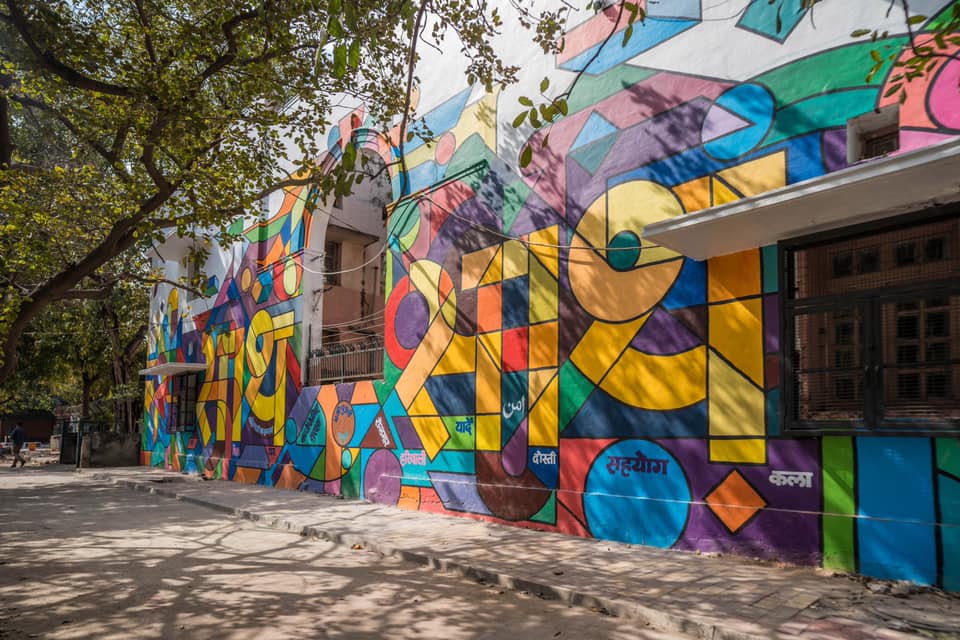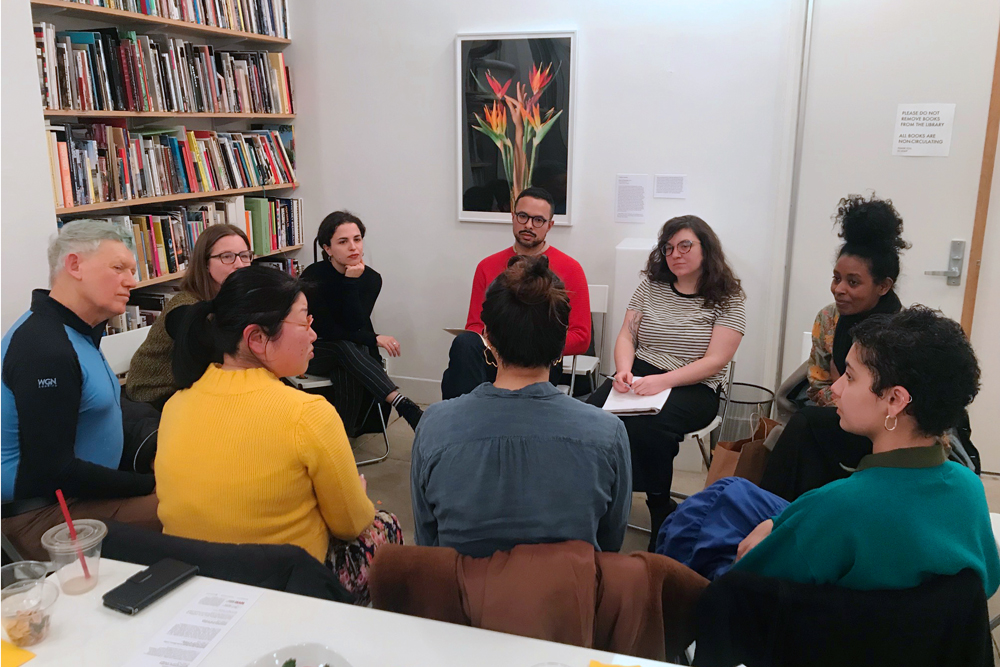REVOLUTION–ARY FASHION
How the Gilets Jaunes Became Haute Couture
Sebastian Grant
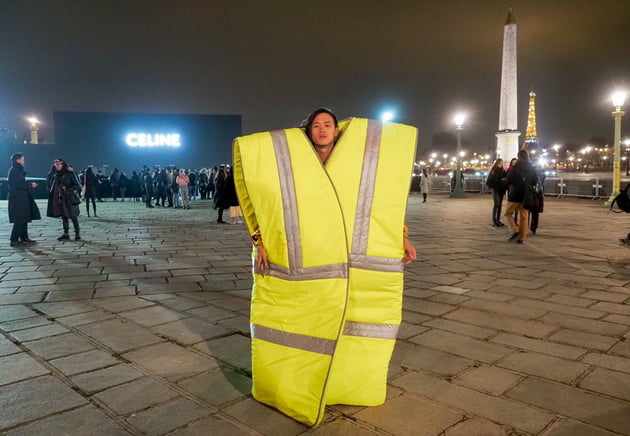
The gilets jaunes: a movement of fire and anger wrapped in a garish yellow security vest. Over the past year, the movement has steadily gained momentum in its resistance to the French Government of President Macron since its original nationwide demonstration on November 17, 2018. What began as a protest against Macron’s proposed raises on diesel gas prices has slowly transformed into collective anger against the wealth-biased nature of Macron’s budget and financial proposals, bringing citizens of multiple political viewpoints together against a president considered neoliberal and elitist.
One of the most interesting aspects of the movement is that it is not named by the goals it wants to accomplish, but instead by a garment choice made by its participants. Gilet jaune is the name for the bright yellow vest that all French motorists must, by law, keep in their cars. The law came into effect in 2008, with the intention of minimizing roadside accidents during emergencies, allowing any person who needed to exit their vehicle in the middle of traffic to maintain high visibility. There are many reasons why the yellow vest plays an important role in the identity of the movement: It is a bold signifier that is easy to spot and identify, it is relatively easy to purchase, and it is a garment associated with working-class industries. Worn as a uniform, the gilet jaune has the ability to democratize protestors, no matter their background or privilege, into a single unified collective. It is these basic factors that make the yellow vest a perfect icon to define the movement, enabling it to capture supporters from all over the world, some of whom wear them in their own protest movements in solidarity.
Seeing a movement identified by a garment begs the question: how has fashion been used as a tool in previous protest movements? Many protests in history are defined by ideas relating to class, nationalism, or identity politics, but do these definitions play a similar role when examining the relationship between protest and fashion? And how have those garments lived on after the end of a protest itself? Looking at moments in French history before the rise of the gilets jaunes, fashion and protest have had an important relationship in the shaping of French identity before the French Revolution in 1789.
Throughout French history, fashion, the process of using garments to define societal taste, has played an important role in delineating class, status, and power, reaching its most inventive state during the reign of King Louis XIV. Establishing absolute rule through a systemic performance of monarchical power, Louis XIV foisted rules of fashion and taste on the aristocracy, consistently compelling them to decorate themselves in the latest styles, or face court ostracism. In addition, fashion had a defining factor throughout the rest of the country to classify and sort members of different classes into one of the three estates (clergy, nobility, and commoners) that dominated the French political sphere. For example, high-heeled shoes were a signifier as to whether or not one belonged to the small circle of the aristocracy, and the large hoop skirts worn by women, which limited their movement, bespoke to the leisurely lives that the nobility led. The significance of fashion’s role in French social hierarchy was so deeply rooted that it became just as essential after the deposition of the Ancien Régime and the arrival of the French Revolution in 1789, when fashion was utilized to reflect the democratic viewpoints of the rebellion.
In the many factions that formed in the burgeoning French Republic, the group that most notably used fashion to define their movement was the Sans-culottes. This was one of the more radical groups to develop from the Revolution, comprised of lower-class workers who advocated for complete abolition of authority, often through violent means. The Sans-culottes emerged as a cohesive unit around 1792, characterized by their refusal to wear breeches, known in French as culottes.1 Breeches, the knee-high trousers that were usually paired with stockings, were an item of clothing that could only be worn by members of the aristocracy or upper-middle-class citizens, and their fine and delicate nature played a great part in the late 18th-century extravagance that eventually plagued the French monarchy. In contrast to the aristocracy, members of the Sans-culottes wore simple, long cotton trousers of the kind usually worn by day laborers and members of the working class. As the Sans-culottes continued to expand into one of the most influential factions of the Revolution, especially when they became the paramilitary force during the Reign of Terror, the trousers that they wore became less of an actual representation of the class of people that wore them, and more of a political symbol for people who had grown weary of debasement by the noble elite. This symbolism can be most clearly seen in the presence of middle-class participants who did not need to wear culottes in their daily life, but who wore them as a symbol of solidarity with the French Republic. Even some members of the nobility donned the laborers’ trousers in solidarity with the movement, often in fear of being labelled as counterrevolutionaries, and losing their head.2 These ordinary trousers transcended their basic use as a workman’s uniform, and through the Sans-culottes identity, they became an iconic badge of the freedom and pride of distancing themselves from the tyrannical control of the Ancien Régime.
Protest via personal fashion was not limited to the lower classes of French society. Just as fashion was used as a tool to help establish collectivization and identity in protest, it also became a reactionary device shown in the counterrevolutionary rebellion of the Incroyables and Merveilleuses. Developing in 1795, after the revolutionary excess and violent bloodshed of the Reign of Terror, the Incroyables, with their female counterparts the Merveilleuses, consisted of young aristocrats who had lost family members to the blade of Madame Guillotine. They led a movement based solely on their fashion choices, earning the label “18th-century Punks” from some scholars.3 Traumatized by the great amount of deaths of their loved ones, and the existential threats the Revolution played on their status and identity as nobles, the Incroyables responded by adopting a somewhat proto-Dadaist and proto-Nihilist attitude in their sartorial presentation. Wearing the most outrageous outfits, they openly rebelled against the social norms and rules established by the French Republic while commemorating the deaths of their families in absurdist ways. Combating the more democratic lifestyles of their fellow constituents, and flouting lower-class dress styles usually attributed to the Sans-culottes, the Incroyables lived in extreme luxury and decadence, and they created a fashion style so over-the-top that it reached the point of looking ridiculous. They would often be seen in the streets wearing green jackets (green was a color used for royalty in the Ancien Régime) with oversized lapels, and multiple ascot neckties that would cover the neck almost to a suffocating manner. They abandoned cleaner hairstyles in favor of long wild tresses that hung around their ears (aptly named the dog-eared style), mimicking the position of one’s head as if it were about to be severed by the guillotine. The Incroyables would also adopt a hunchbacked persona, create an affected lisp (taking care to never pronounce the revolutionary letter ‘r’), and carry a bludgeon with which to attack their democratic opponents in the street.
The Merveilleuses also made similar radical changes to their fashion choices by adopting more aggressive stances in the portrayal of their sexuality, and by wearing more revealing outfits. Influenced by the Grecian styles in vogue during the age of Neoclassicism in the late 18th-century, they would wear long, loose-flowing shifts, which were considered at the time to be like undergarments, and would let these dresses emphasize their curves, rejecting the standard practice of hiding the female body under petticoats and hoop skirts.4 They were also known to openly show their breasts and their buttocks through sheer tight fabric, shocking the expectations of respectability in the era. Complementing the debauched luxury of their male companions, the Merveilleuses would accessorize their outfits with large hats, expensive perfumes, and golden rings on their fingers and toes, like Greco-Roman figures of the past. They would also pay absurd homage to the deceased by wearing red string tied around their necks and greeting each other by moving their arms in a slashing motion across their necks, symbolizing decapitation. These extreme garment choices, meant to elicit shock and awe from the public, are a clear example of how aristocratic fashion, which played an important role in the time of Louis XIV, was used in an act of rebellion against a revolution that had lost its way. The devolution of France into a period of mass chaos was symbolized by the ridiculous outfits worn by these groups, and although the Incroyables and Merveilleuses movements died out by the rise of Napoleon, their outrageous sartorial choices played an influential role in the rise of early 19th-century fashion styles such as Dandyism and Grecian Neoclassicism.
Moving 100 years into the mid-20th century, the general strikes and riots of May 1968 led to one of the most violent and significant political movements in France since the revolutions of the 19th century. Started primarily by leftist students and disgruntled workers, the strikes—organized against capitalism, consumerism, the influence of American Imperialism, and the reigning presidency of Charles de Gaulle— had such a profound effect on the country that it stalled the French economy for a month, and eventually introduced new liberal movements, such as women’s rights and gay rights, into French politics. While it was not a protest movement that explicitly used fashion as a tool in pursuit of its goals, the fashion choices made by the students of the late 1960s were a reflection of the rebellious attitudes taken against the establishment. Influenced by the Mod and Psychedelic styles of the decade, many of the protests’ participants can be seen wearing more relaxed, diverse, and informal styles—a stark contrast to the strict dress codes and conformity their parents embraced in the 1940s and 50s. Instead of business suits decorated with all the necessary accoutrements, protestors can be seen wearing loose-fitting sweaters and turtlenecks, leather jackets, and dress shirts without ties.5 As most of the student participants were adherents of Marxism, Leninism, or Maoism, these ideologies were also reflected in their outfits by adding working-class accessories such as baker boy hats (as famously worn by Lenin) to their mostly middle-class attire.
The movement also encompassed diverse female fashions that had developed since the dawn of the modern women’s rights movement. Having just gained the right to vote in 1944, women in France were often still relegated to traditional roles of domesticity in the 1950s, but the influence of feminist texts from authors such as Simone de Beauvoir and the anti-establishment attitudes of youth culture of the late sixties led to rebellion against the patriarchy that dominated French society.6 This rebellion was also shown in the diversified garments that allowed women an individual identity against feminine conformity, exchanging housewife dresses for revealing miniskirts or masculine jeans. As the events of May 1968 influenced social justice movements for the people of France, the figure of the bold woman protester also influenced the world of fashion, as top brands began marketing comfortable and diverse ready-to-wear styles, and magazines began to portray their models projecting greater confidence and independence as early as the 1970s.7
These examples are only a small fraction of many instances in which fashion has been used as a symbol to help define and symbolize an era of revolutionary aims. Protest has undergone its own signification multiple times by becoming incorporated into modern high fashion tastes. Fashion has had a tendency to appropriate styles from counter-cultural movements—most famously seen in the popularity of hippie culture in the late 1960s and the adoption of grunge in the 1990s—and we can see instances when the protest movements previously discussed have popped up as objects of haute couture despite their humble beginnings. In his inaugural collection, former Dior creative designer John Galliano used the fashions of the French Revolution as inspiration for his show Les Incroyables.8 Mixing together elements from both major fashion movements of the Revolution, he created a collection featuring the Phrygian cap and the tricolore of the Sans-culottes while incorporating the extravagant lapels and ascots from the Incroyables. Using a postmodern combination of two former fashion styles, especially ones that were so antagonistic to one another, Galliano seems to have removed the symbolism that originally made these garments so revolutionary in their own right, transforming them into artistic constructions of an imagined past far removed from any reality.
Additionally, the fashions of May 1968 have recently become incorporated into multiple high fashion collections, especially during the 50th anniversary of the protests in 2018 (the same year as the beginning of the gilets jaunes protests). During a period of many recent protest movements of the 2010s—from Black Lives Matter and Occupy Wall Street to the rise of populist protests in support of Trump and Brexit—the raging flames of protest have gained coverage by the mainstream media at a level not seen since the sixties. Noticing these recent trends in protest aesthetic, top luxury brands have also been adopting activist chic from the past in their most recent collections. In Dior’s Winter/Fall 2018 collection, Creative Director Maria Grazia Chiuri presented her influence from the May 1968 protests by using explicit recreations of the late sixties styles that encompassed the movement, including loose sweaters, kilts, patchwork, Black-Panther-style militaristic berets, and Leninist baker boy hats.9 With a runway covered in protest posters, Chiuri’s collection was designed to utilize protest to create feminist awareness and self identity, most clearly seen on a sweater which displays the words “C’est Non, Non, Non et Non!”10 Gucci also commemorated the 50th anniversary in their ad campaign Dans la Rue,11 which recreated photographs and scenes from the May protests, using wildly glamorous models dressed in sixties student streetwear, scaling the side of a building.
These recent incorporations of protest culture into high fashion represent a strange and contradictory dichotomy between the two groups. While fashion can define and symbolize a protest movement, it also has the ability to take on a problematic role as soon as those originally countercultural fashions become incorporated into luxury fashion houses as historic tributes to the past. Because high fashion takes place in a commodified culture made for the elite, while protest usually supports the oppressed and the disenfranchised, the two can rarely create conversations of true meaning when their end goals are so vastly different. Oftentimes, as recent backlash has shown for the Gucci campaign, luxury fashion misses the mark in understanding the original intentions of the movements, as they repackage working class garments and resell them at higher price points to upper class clientele.12 In addition, as nostalgia and trendy retro culture continue to dominate the mainstream mindset in fashion, the original intention of protest garments is lost, and those clothes that symbolized social upheaval and change in their original iteration become appropriated costumes used by bourgeois buyers.
Considering the trends that led many protest garments to become transformed into high fashion commodities raises questions about what is in store for the future of the gilet jaune. While the yellow vest is so glaringly different from other fashions in the past, with its neon yellow color made of cheap material and tacky reflector strips, does it have the potential to become the next fashion icon after the protest has died down? After the 2008 creation of the traffic law, before any thought of the impending riots, there had been instances in France where the yellow vest was creatively transformed to promote its safety benefits. In 2011, art students Alison Vonthron and Pauline Heude collaborated with French auto insurance company Allianz France to create an exhibition where 65 artists and designers each created their own redesigns of the yellow vest in different aesthetic constructions.13 Held at the Laurence Esnol Gallery in Paris, the exhibit encouraged participants to visualize the vests as fashion objects, instead of utilitarian ones, and to predict different methods in which the yellow vest could be seen as a fashion statement. The yellow vest was also famously reviewed by the late fashion designer Karl Largerfeld, who, while promoting the vest as a safety object, gave a tongue-in-cheek response, stating, “It’s yellow, it’s ugly, it does not go with anything, but it can save your life.”14
Mere months after the start of the gilets jaunes movement, the image of the yellow vest has gained iconic status, especially through its popularity in Internet culture. Images doctored with yellow vests can be found in memes spread among participants and supporters, and outside of the Internet, protest movements from Belgium to Argentina don yellow vests in solidarity.15 It has even made its appearance in the art world by emerging in street art murals in France—such as the piece by Pascal Boyart, which can be seen in Paris’ 19th district—or in Miami’s famous Wynwood Walls during Art Basel.16
Seeing the attention the yellow vest has so far received in the world of art and design, it seems like it will be only a matter of time before this symbol of working-class solidarity becomes co-opted by a fashion industry desperate to capitalize off its relevance. Like other garments of past protests, will the yellow vest be stripped of its meaning, to be perverted into the latest commodity sold by luxury brands? The best way to know the future is to take a look back at the Paris Fashion Week last January when a participant in the Céline show made his fashion debut with, you guessed it, an oversized yellow vest.
-
Michael Sonenscher, Sans-culottes: An Eighteenth-Century Emblem in the French Revolution, (Princeton: Princeton University Press, 2008), 57-58. ↩
-
Albert Sobul, The Sans-culottes: The Popular Movement and Revolutionary Government, 1793-1794, (Princeton: Princeton University Press, 1980), 228. ↩
-
Alexander Fury, “When Fashion Becomes a Form of Protest,” The New York Times Style Magazine, August 17, 2016, https://www.nytimes.com/2016/08/17/t-magazine/fashion/fashion-as-protest-french-incroyables.html ↩
-
Ibid. ↩
-
Lauren Cochrane, “The Social Fabric of 1968… Reimagined for the Age of the Pussyhat,” The Guardian, March 25, 2018, https://www.theguardian.com/fashion/2018/mar/25/fashion-world-50th-anniversary-paris-student-uprising ↩
-
Claire Duchen, Women’s Rights and Women’s Lives in France 1944-1968, (London: Routledge, 1994), 1-3. ↩
-
Alexis Romano, “Fashion and May 1968,” Romano Projexts, April 26, 2017, https://www.alexisromanoprojects.com/single-post/2017/04/26/Fashion-and-May-1968 ↩
-
James Anderson, “John Galliano: Les Incroyables, London, 1984,” Civilian, June 14, 2013, http://civilianglobal.com/design/les-incroyables-london-1984-john-galliano-central-saint-martins-club-to-catwalk/. ↩
-
Cochrane, “The Social Fabric of 1968...” ↩
-
Translation: “It’s No, No, No, and No!” ↩
-
Translation: “On the Street” ↩
-
Angela Natividad, “Gucci’s ‘60s-Inspired Student Protest Ad Misses the Point About Why We’re All Mad,” AdWeek, February 16, 2018, https://www.adweek.com/creativity/guccis-60s-inspired-student-protest-ad-misses-the-point-about-why-were-all-mad/. ↩
-
“Le gilet jaune de sécurité au service de l’art,” Autonews, February 11, 2011, http://www.autonews.fr/actualite-voiture/le-gilet-jaune-de-securite-au-service-de-l-art-42986 ↩
-
Translated by author from original text “C’est jaune, c’est moche, ça ne va avec rien mais ça peut sauver la vie.” Quoted from a promotional ad by the governmental Sécurité Routière program. ↩
-
“The ‘Gilets Jaunes’ Movement Takes over the Internet,” Trendland, December 12, 2018, https://trendland.com/the-gilets-jaunes-movement-take-over-the-internet/. ↩
-
Marion Dupont, “Street Art: ‘La Liberté guidant le peuple’ revue et rhabillée à la mode ‘Gilets Jaunes’,” Le Monde, January 20, 2019, https://www.lemonde.fr/idees/article/2019/01/20/la-liberte-revue-et-rhabillee_5411879_3232.html ↩

